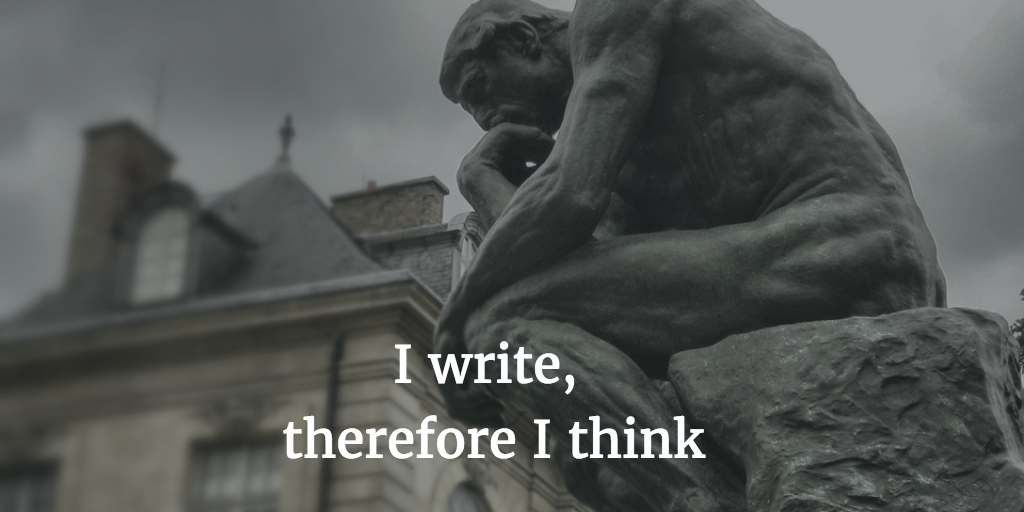
The last couple weeks, I’ve heard a chorus of authors struggling with their outlines.
“I’ve reluctantly concluded that my outline might need to be split into two books.”
“Now that I’ve written most of the draft, I realize that I should narrow the focus.”
The same thing happens to me regularly. I love outlines; they are an important part of my writing process. But when writing a book, I find it very difficult to stick to the outline. After getting partway through the ugly first draft, I realize that my carefully planned outline isn’t quite working. It needs shaping and rearranging.
I leave a trail of broken outlines in my wake, and I’m not alone.
What’s going on? Are we all terrible at outlining and planning? Not really.
We often don’t fully understand our topic until we’re in the midst of drafting.
Writing Is Part Of the Thought Process
René Descartes famously wrote “I think, therefore I am”(“je pense, donc je suis”) in his treatise on science and philosophy, Discourse on Method. For Descartes, the act of thought was sufficient proof of his existence.
Deep thought is elusive in our busy, interrupt-driven world.
Writing is a cure. We set aside a quiet time and place, and put all of our focus on the craft. The act of writing keeps our hands and eyes on the task at hand, rather than wandering off to check Facebook. The brain has permission to ruminate on one topic for a while.
I find deep thought through writing.
It isn’t until I am well into a draft that I really figure out what a book should look like, or understand the nuances of a topic. My follow-one to Descartes is: I write, therefore I think.
The sense of discovery is part of the joy of writing.
The downside of discovery? Diverging from the plan of the outline.
Why Outline At All?
Writing for discovery is frightening. An outline provides gives us strength to start working. It sets out a path to travel. Outlines are statements of faith.
When drafting, we contemplate the reader’s perspective, which may change our own. The Muse may contribute interesting ideas worth exploring around the edges of the outline.
So that first outline is abandoned, reworked. We pull the existing draft apart and put it together better than before.
That’s okay.
An abandoned outline isn’t a failure. It’s a sign of a growth mindset and an author willing to serve the needs of the content and the reader.
Further Reading